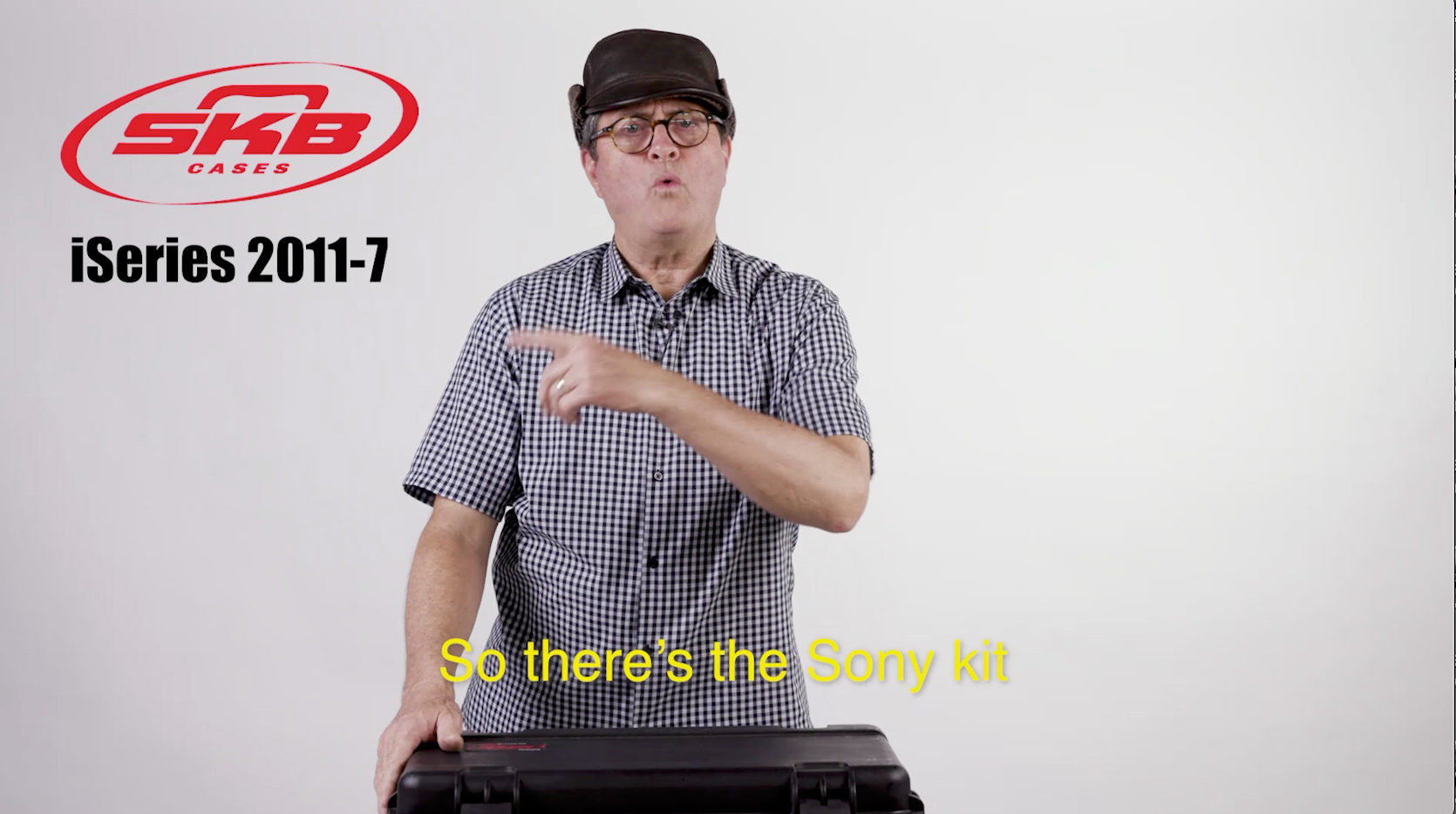Hi, this is Jay P. Morgan. Today on The Slanted Lens, we’re going to take a look at Tamron’s new 150-500mm lens. This is an f/5-6.7 variable aperture lens.
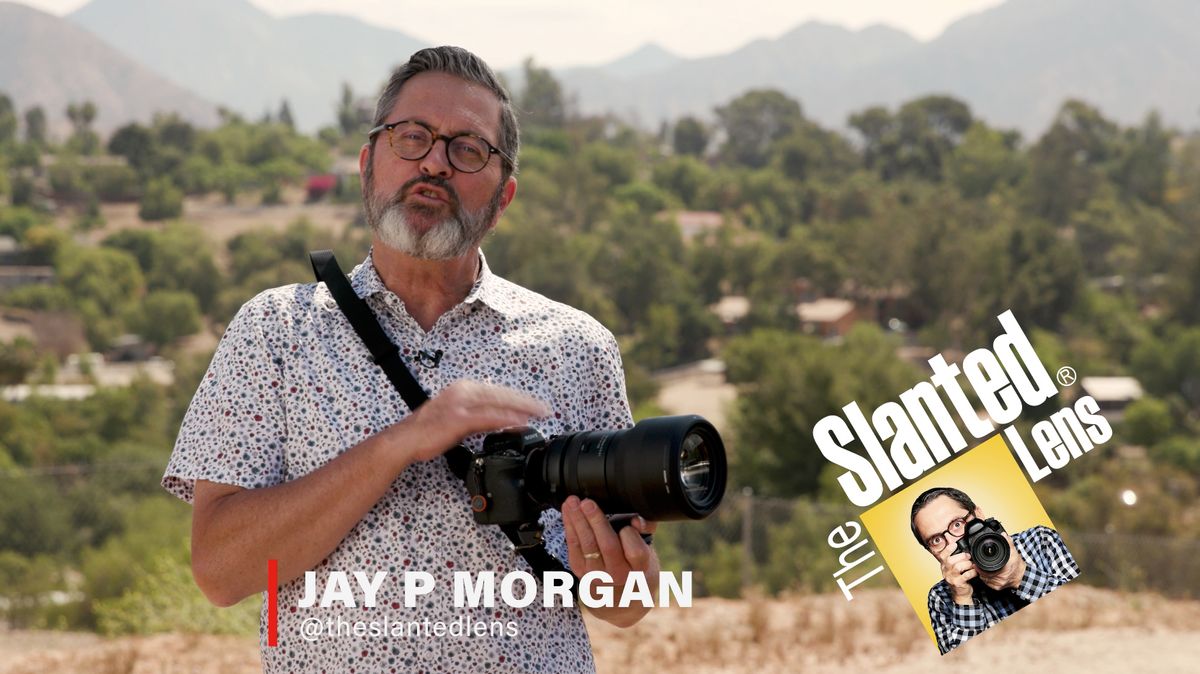
Before we get too much into how I’ve used it, I’ve been shooting with it for the last few days and I’ve had a great experience with it. I’ve done everything from wildlife, to birds, to sports and it’s been a lot of fun to use. But let’s first talk about how this lens works and exactly how to use this lens so you can get the best results from it.
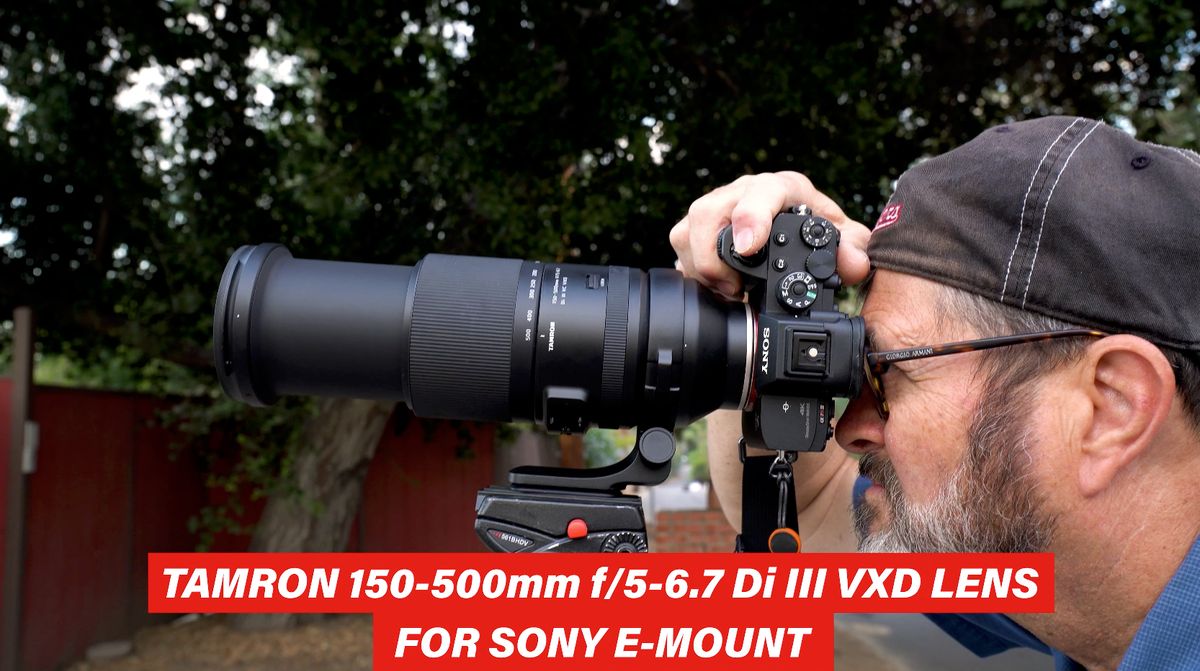
This is an external zooming lens. And what that means is that, as you zoom, it’s going to telephoto. It’s going to make the lens longer. 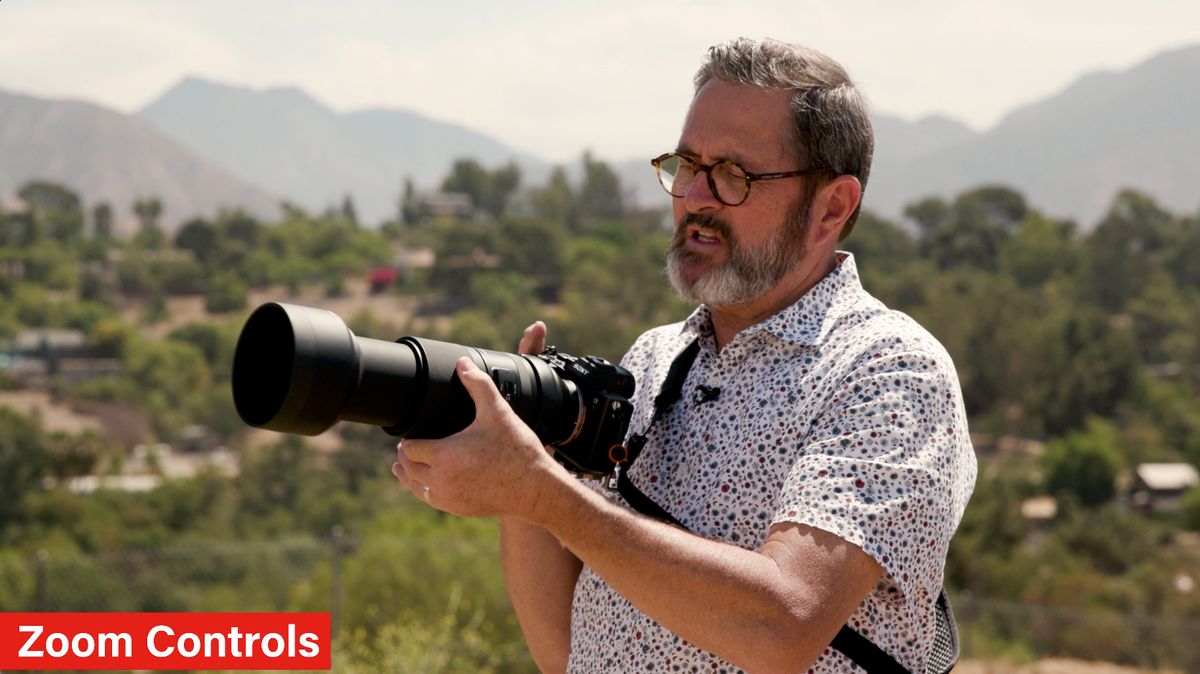
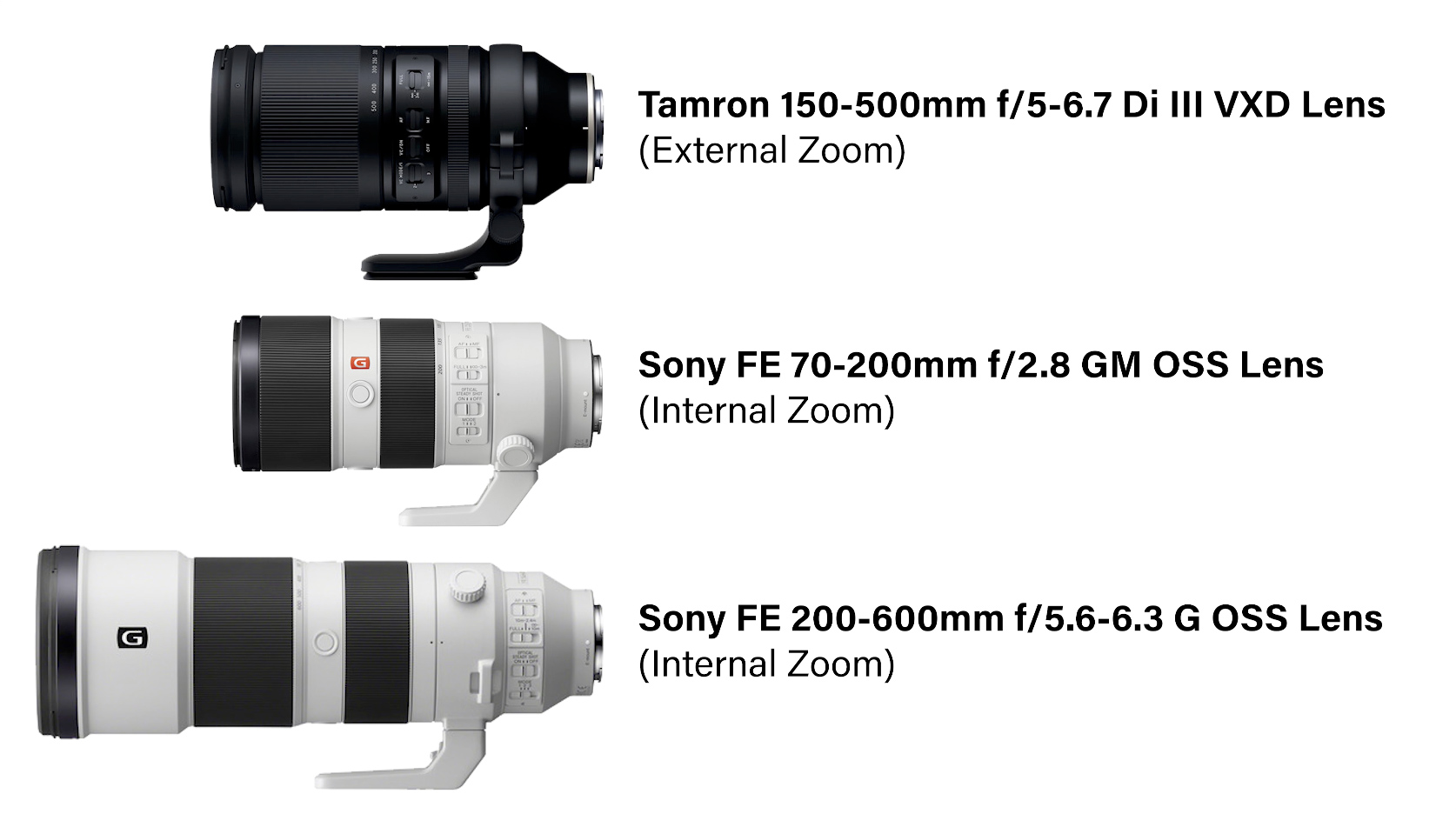 An internal zooming lens means the lens is going to be a little longer and that zooming happens inside the casing of the housing of the lens. The advantage of an external zooming lens is: A. It shrinks a lot smaller. It makes it much smaller to be able to make it compact. To be able to lock it in place and put it in your bag.
An internal zooming lens means the lens is going to be a little longer and that zooming happens inside the casing of the housing of the lens. The advantage of an external zooming lens is: A. It shrinks a lot smaller. It makes it much smaller to be able to make it compact. To be able to lock it in place and put it in your bag. 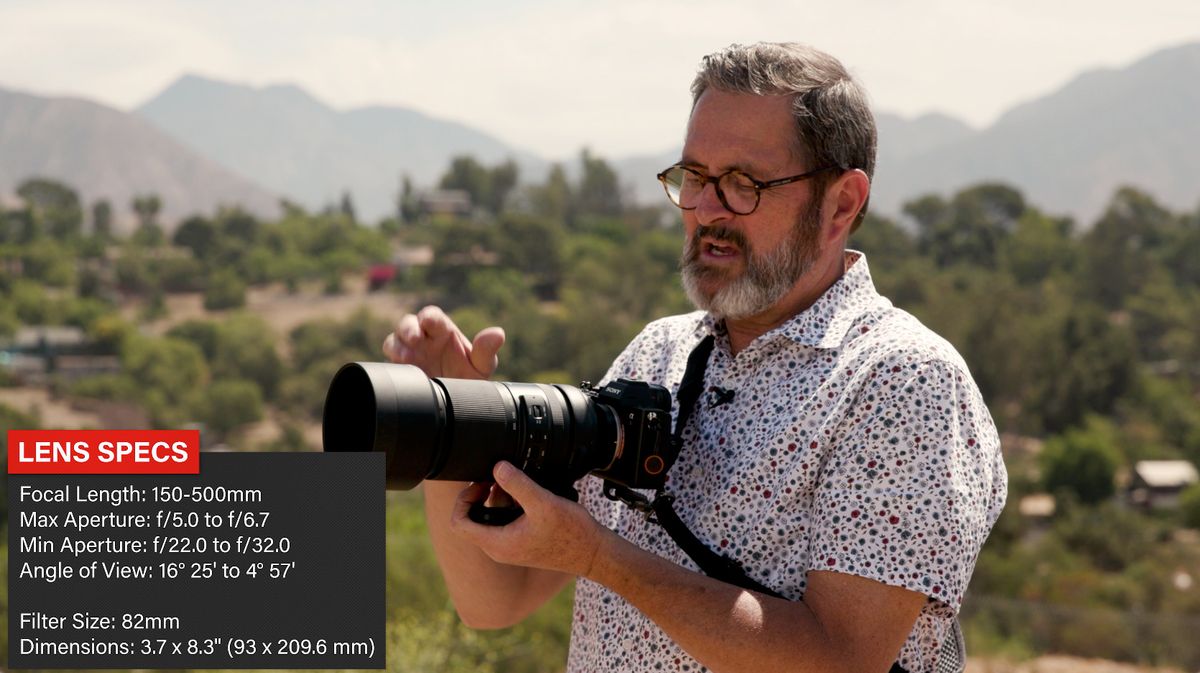 Tamron included locks, so you can lock it in that 150 millimeter mode. And that makes it really easy to be able to lock it when you put it in your bag.
Tamron included locks, so you can lock it in that 150 millimeter mode. And that makes it really easy to be able to lock it when you put it in your bag. 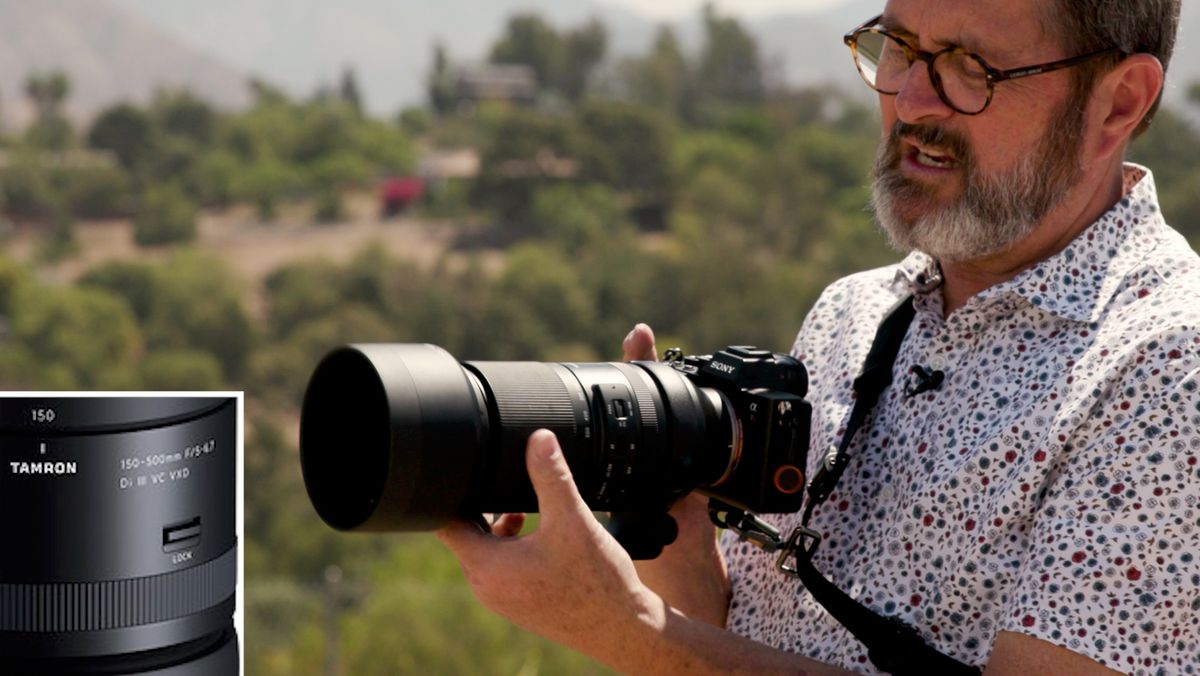 B. But the thing they’ve done that I think is super important with this is: If you’re shooting and you start bumping the collar, or if you’re on a hillside and gravity takes over, they’ve got a locking mechanism right here on the collar that will lock this at any millimeter that you’re on. That way you can be locked. If I want to be here at 350mm, I can lock it in that place and it’s not going to go anywhere.
B. But the thing they’ve done that I think is super important with this is: If you’re shooting and you start bumping the collar, or if you’re on a hillside and gravity takes over, they’ve got a locking mechanism right here on the collar that will lock this at any millimeter that you’re on. That way you can be locked. If I want to be here at 350mm, I can lock it in that place and it’s not going to go anywhere.
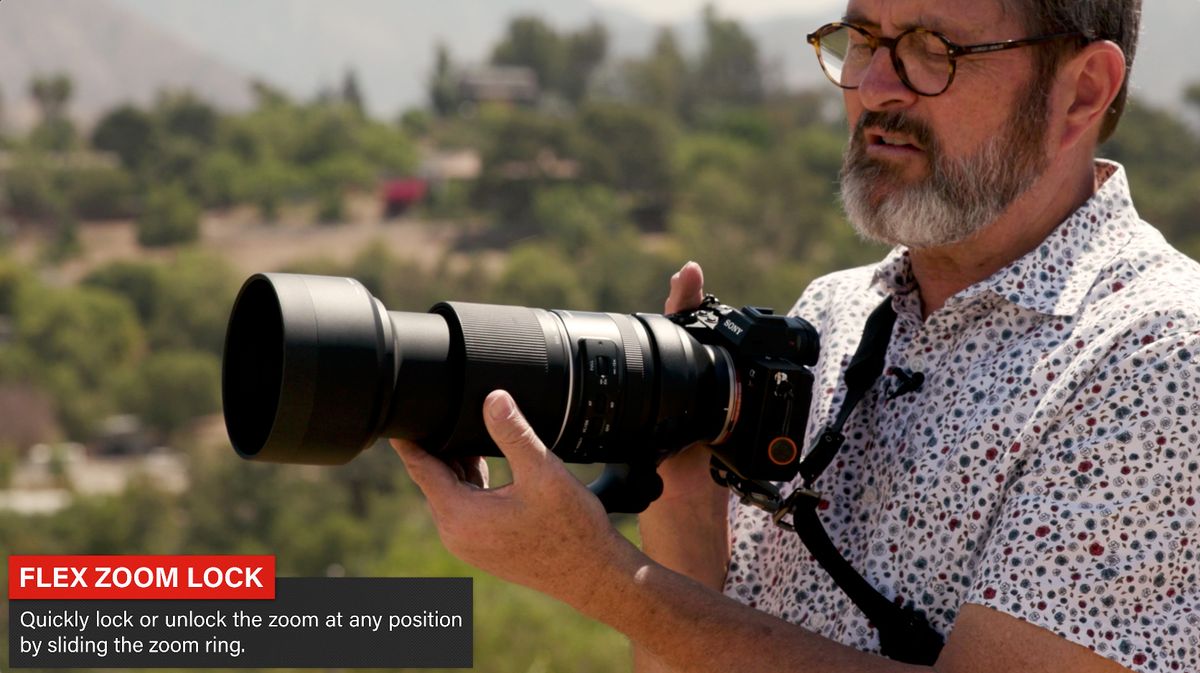
So let’s talk about all of the buttons on the side of the lens here. Because if you understand each one of these, and there’s four of them, it’s going to help this lens perform much quicker for you and be much more effective.
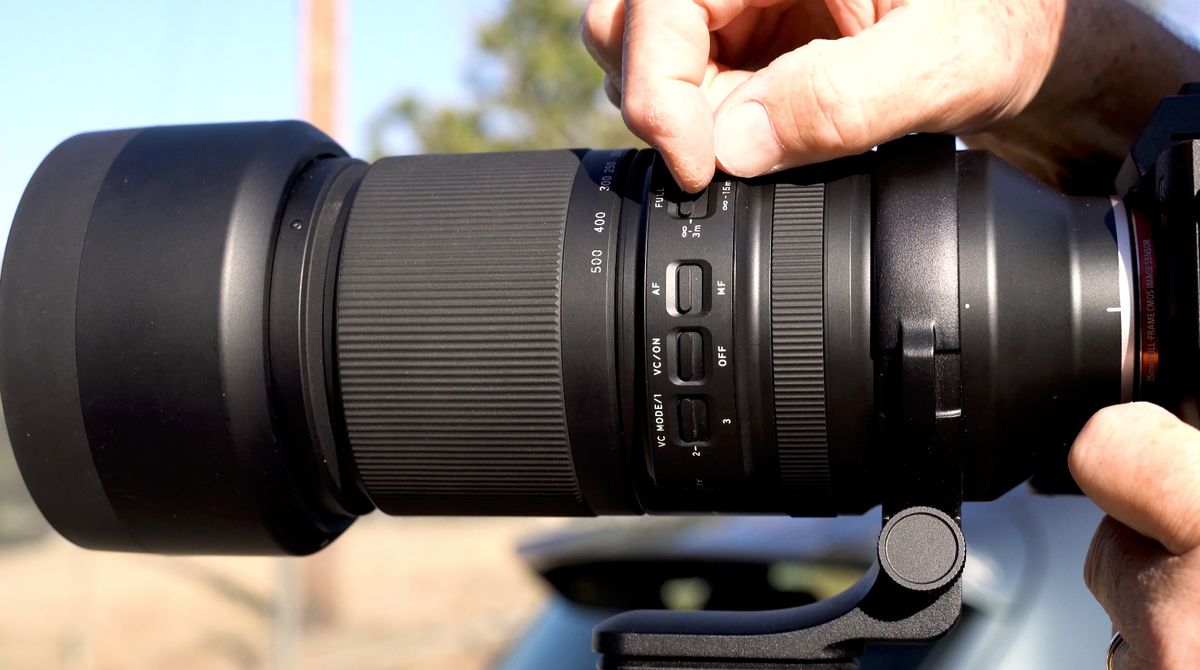
So the first one on the top is you have your autofocus range. You have full autofocus. Which means it’s going to be going as far out and as far in as it can. The motor is going to be driving that lens back and forth, that entire range.
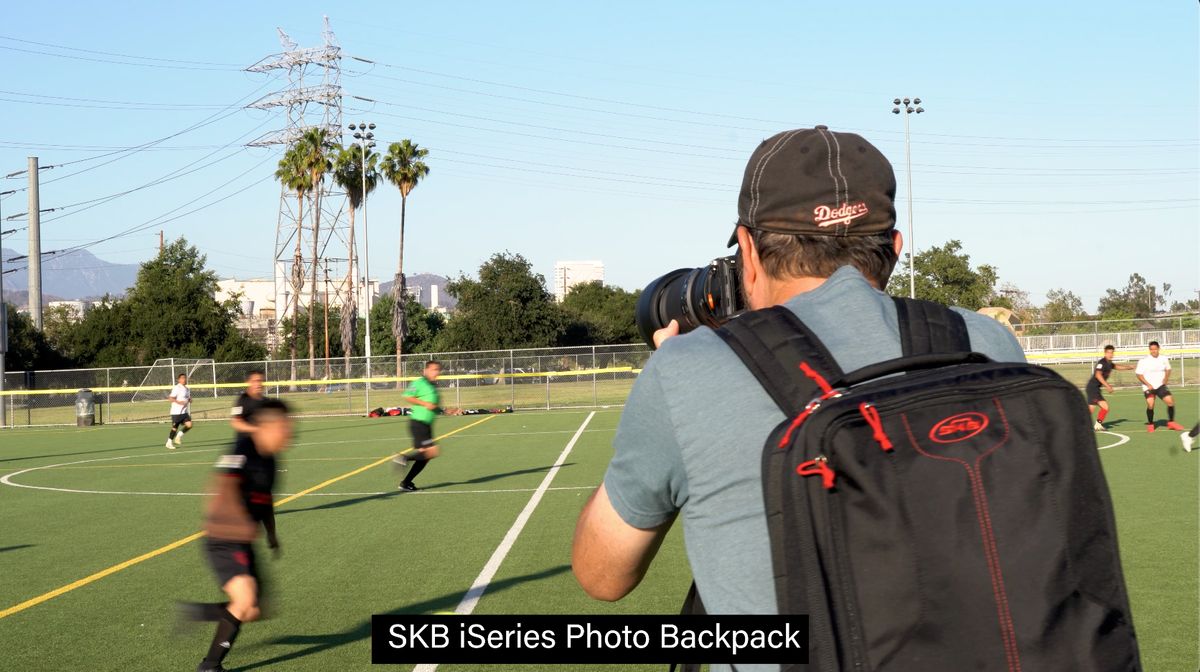
If you know you’re not going to be focusing up front really close, then you can go to the second mode, which is infinity to three meters. So that’s about infinity to nine feet. If you know you’re going to be out there a ways, you don’t want to make this motor have to try to focus that last little bit.
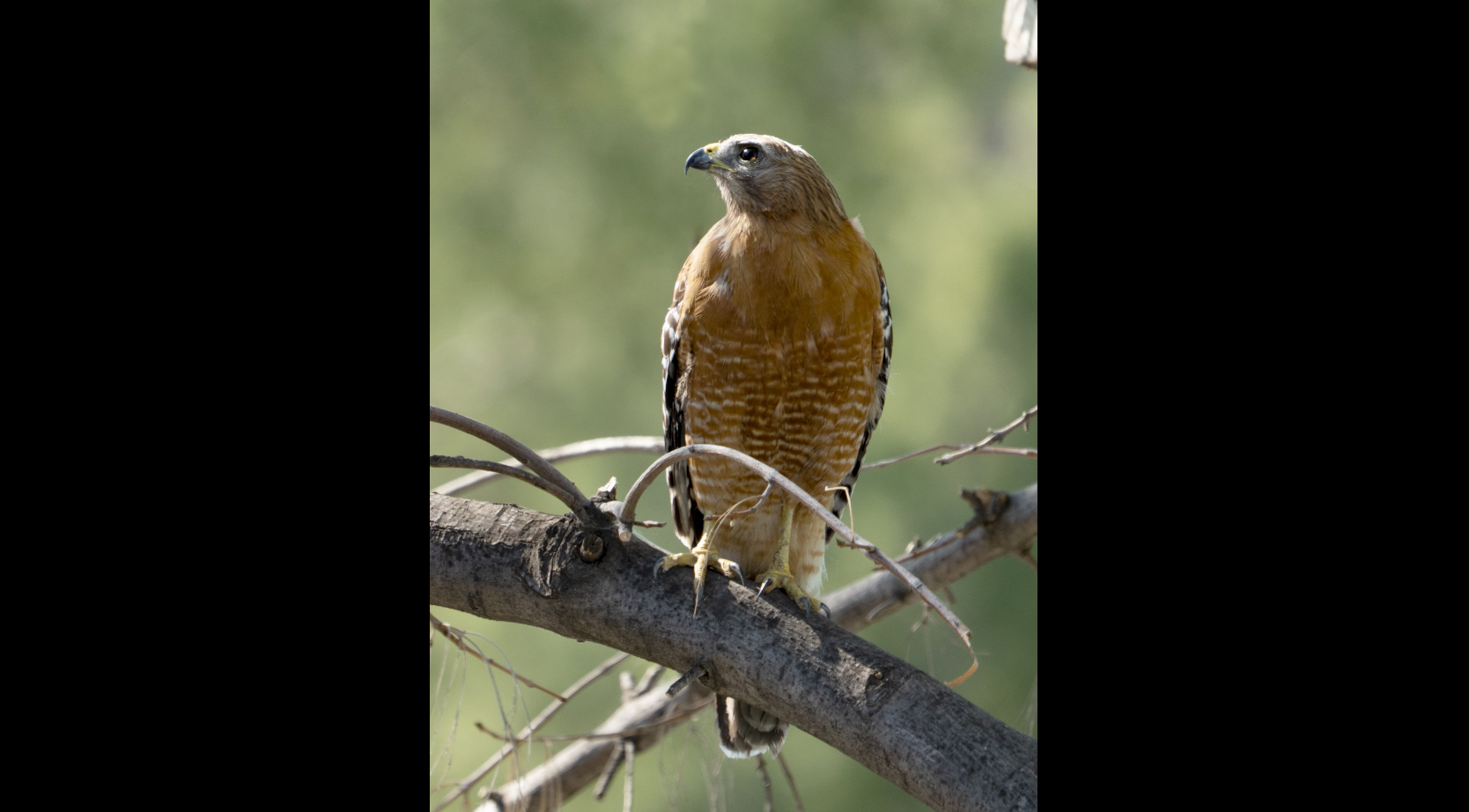
If you know your subject is going to be way out there, go to the last one, which is infinity at 15 meters, which is about 45 feet. So if I’m shooting that Hawk who’s just been flying over us here, I’m going to put that to infinity to 45 meters because I don’t need it to focus super close. It’s out there a ways, and now the motor is going to work faster. It’s super-fast inside this lens, but it’s going to work much quicker to be able to catch your focus and keep it in focus.
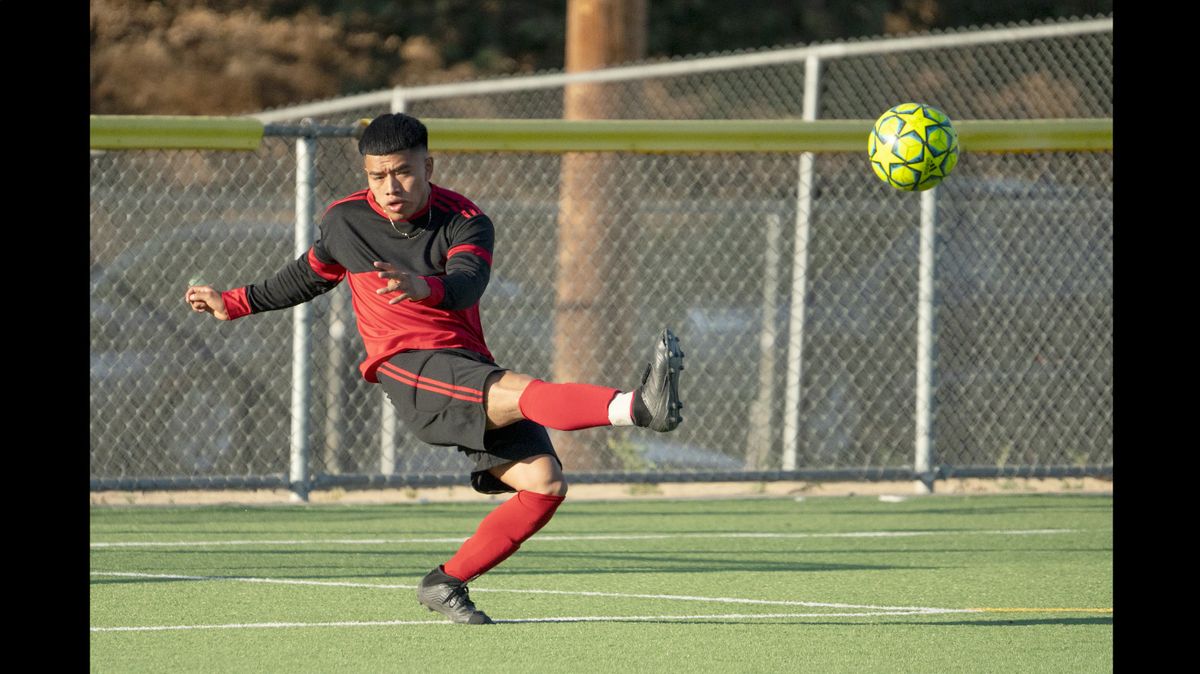
So the first decision is, make sure you decide what focusing mode you want to be on in the situation that you’re in. And of course, next is your autofocus or manual focus. So if you’re going to be in a focusing mode, you’ve got to be in autofocus. I don’t shoot manual very often, it’s just too hard for me to pull focus. I use autofocus all the time.
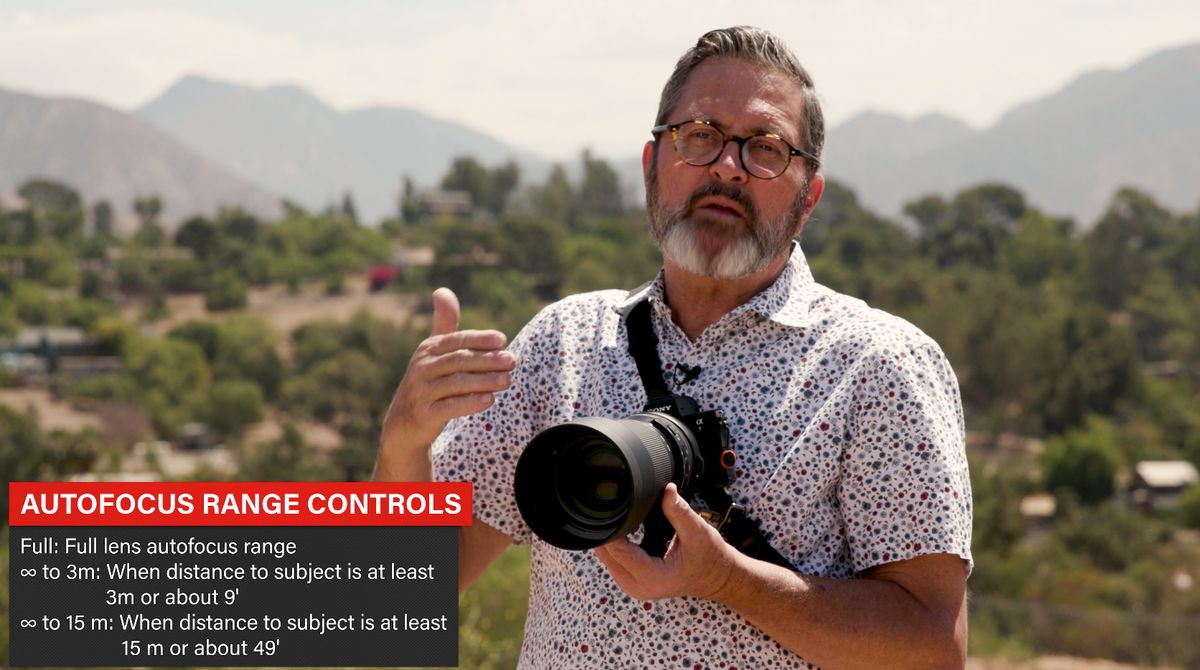
Now we go to VC control. This is one that really messes people up, VC control on or off? If you’re on a tripod, what would you do? Off. You don’t want the VC control on if you’re on a tripod because it’s not going to work the way it should. The camera thinks it’s moving and the lens thinks it’s moving. But it’s in a stationary situation. And it’s going to cause problems. So on a tripod always keep VC control off.
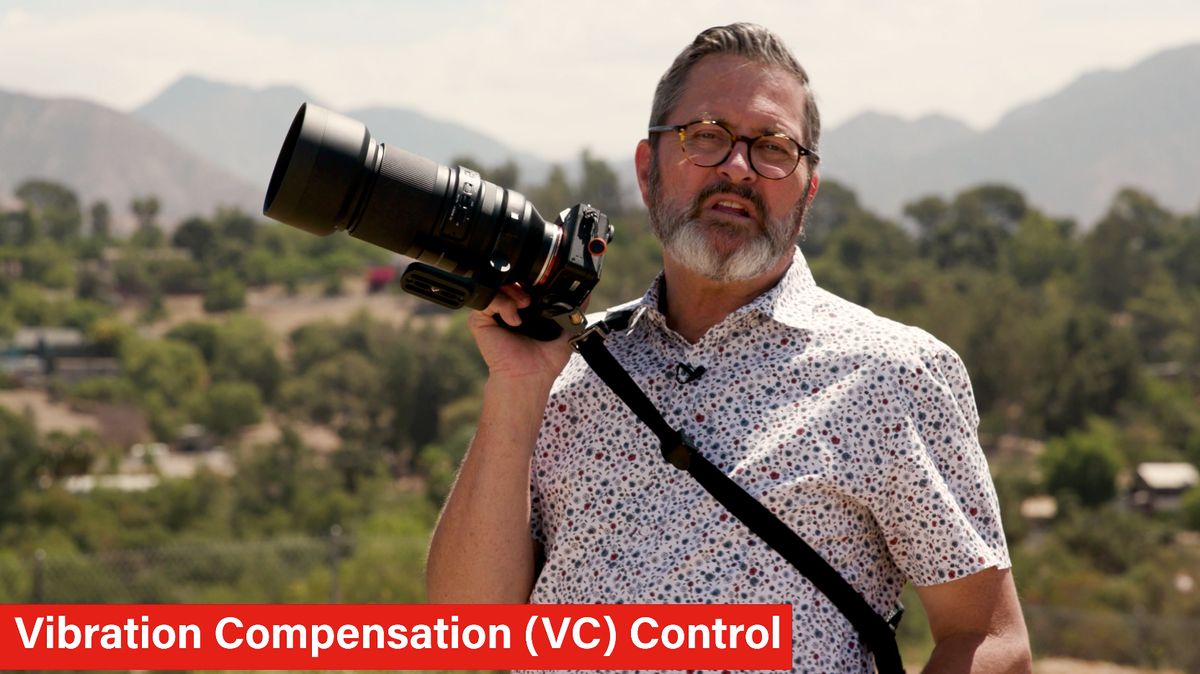
So when you switch to VC on, now you have three modes. The first is a standard mode, it’s just a standard VC control to give you standard stabilization mode. Number two is a panning mode. The lens now is going to work with you as you pan to be able to stabilize. It knows that you’re panning.  So if you’re really panning with something like a car zipping by, something that is going to move fast, then use that second mode. Because it is made for panning. Mode number three is if you’re following something in frame, and you’re trying to stay with it. So you’re moving a little bit and it’s still going to keep your subject in focus.
So if you’re really panning with something like a car zipping by, something that is going to move fast, then use that second mode. Because it is made for panning. Mode number three is if you’re following something in frame, and you’re trying to stay with it. So you’re moving a little bit and it’s still going to keep your subject in focus.  You’re not panning. But you are moving some and in that movement, it will stabilize and it understands that you are moving some. Alright, so there’s your buttons. So now when you go to shoot, each time you go to shoot with this lens, decide what mode you want to be in and how you want this to work.
You’re not panning. But you are moving some and in that movement, it will stabilize and it understands that you are moving some. Alright, so there’s your buttons. So now when you go to shoot, each time you go to shoot with this lens, decide what mode you want to be in and how you want this to work.
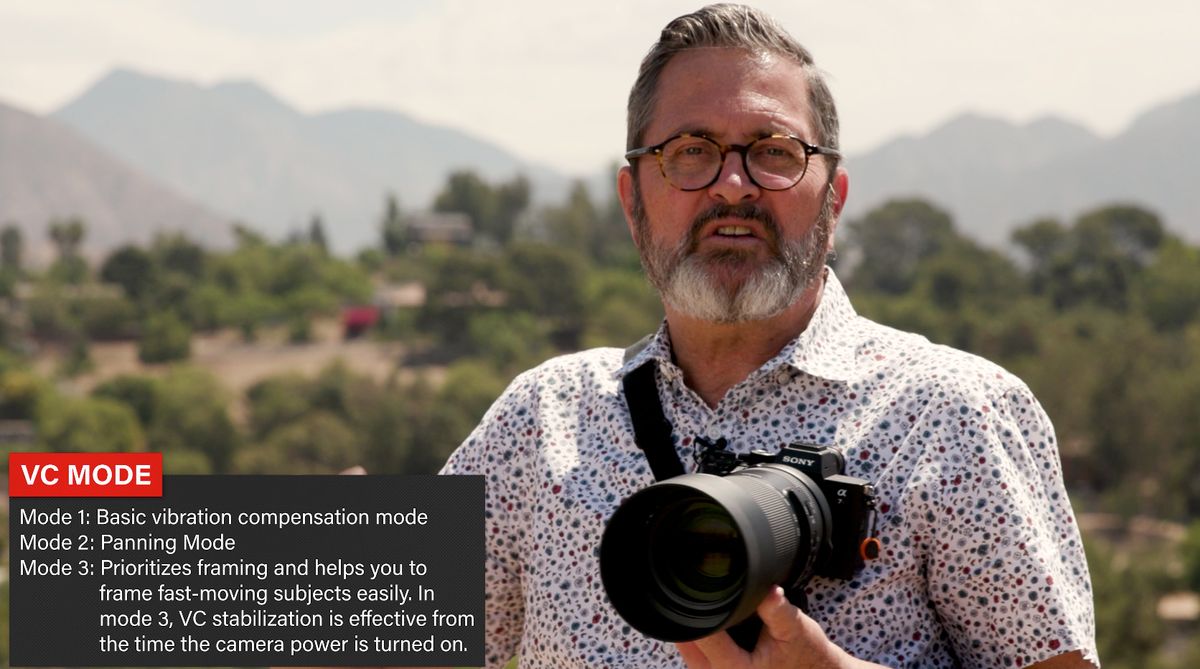
You do get 23.6 inches on 150 millimeters, you get about 70 inches and a bit at 500 millimeters. So I’m usually working this somewhere closer to the 150 millimeters when I’m trying to get in close on subjects. Because I can get in so much closer and it magnifies things and it gives a great result.
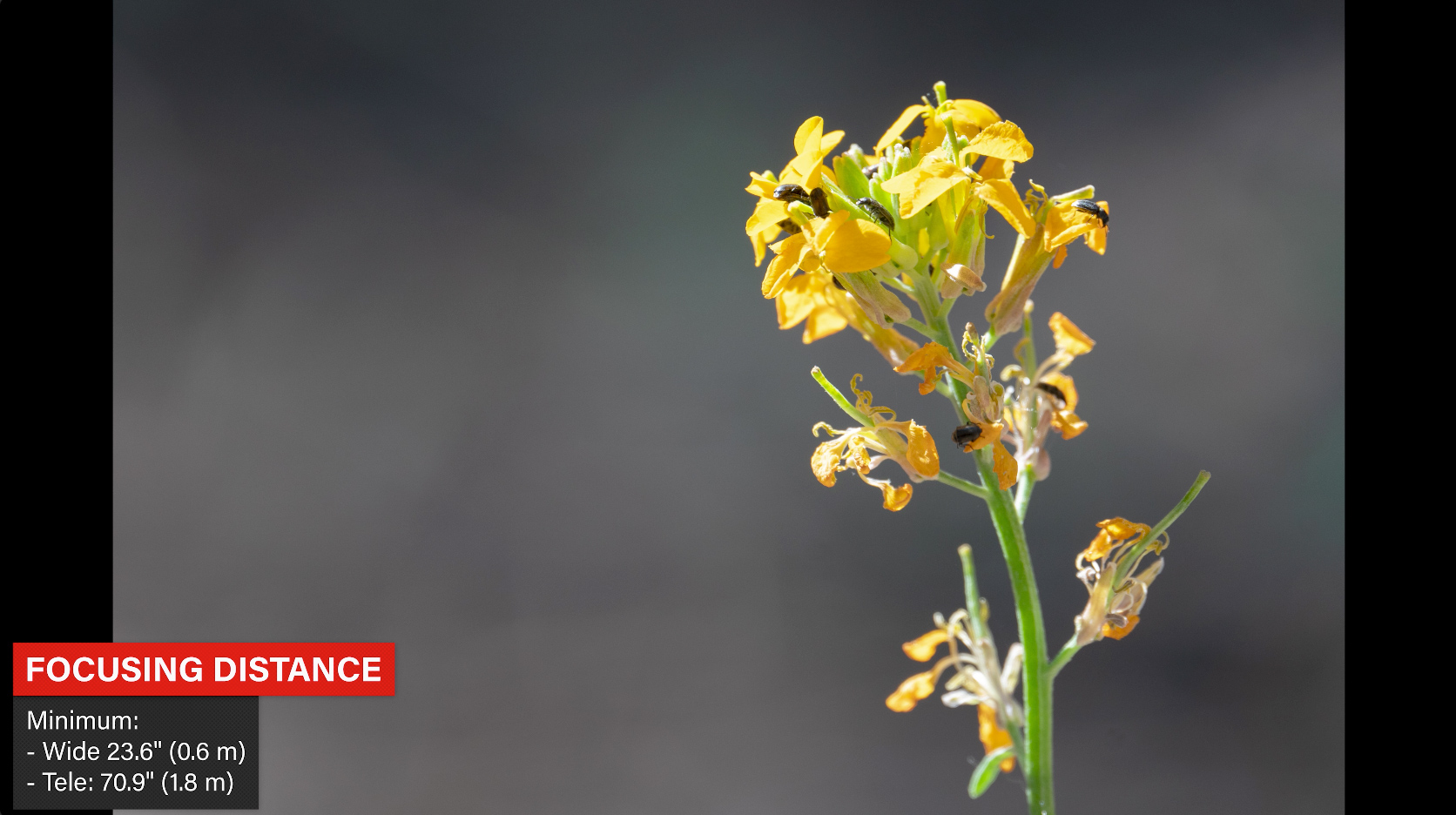
So the weight of this lens is pretty comparable to all the other lenses in this category. It’s definitely not heavier than any other and it’s pretty much about the same as most of them.
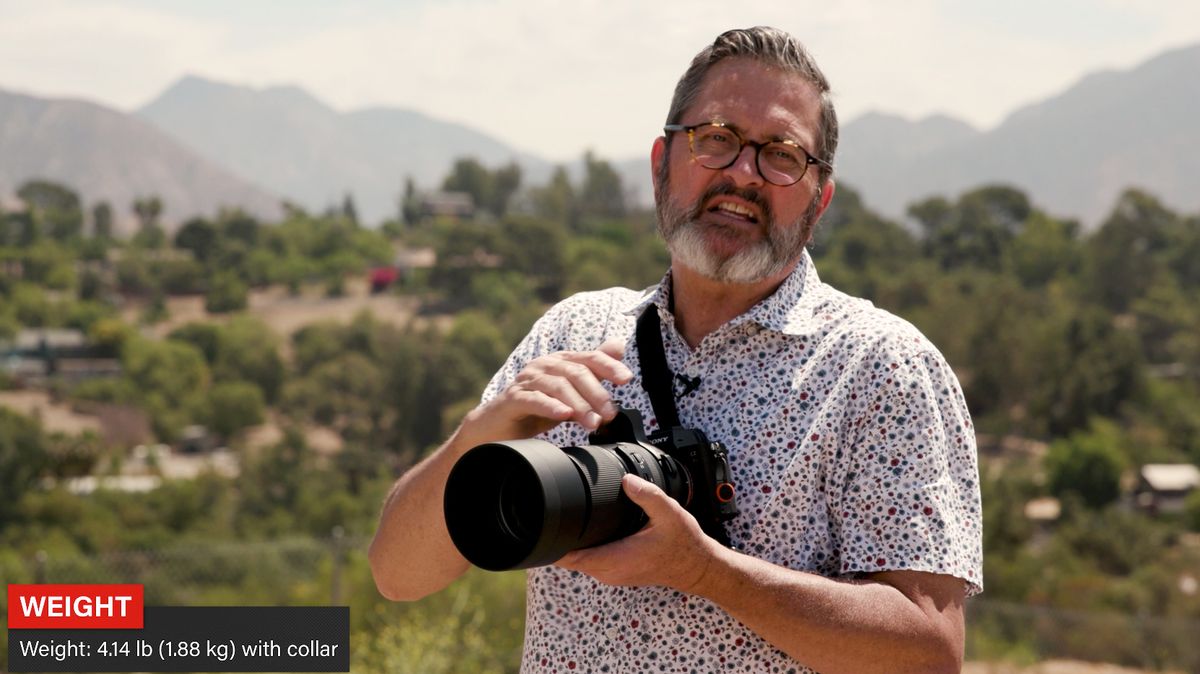
If you can’t use a lens like this and you don’t want to carry it around then would I use a tripod. Use a monopod. Monopods are great for a lens like this because it allows you to run and stabilize. 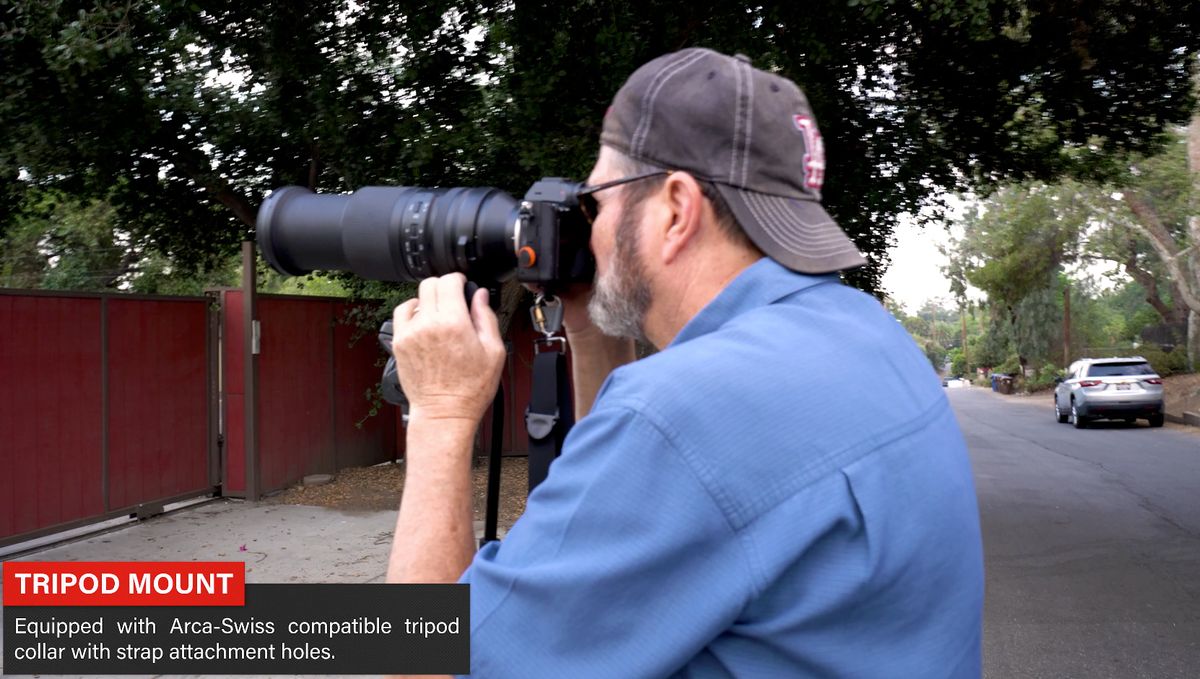 And I would still use the stabilization when I’m on a monopod because you are moving a little bit and that will allow that stabilization to kick in. I do, I use it and I get good results with that. You may want to test it on how you shoot and make sure you like it.
And I would still use the stabilization when I’m on a monopod because you are moving a little bit and that will allow that stabilization to kick in. I do, I use it and I get good results with that. You may want to test it on how you shoot and make sure you like it.
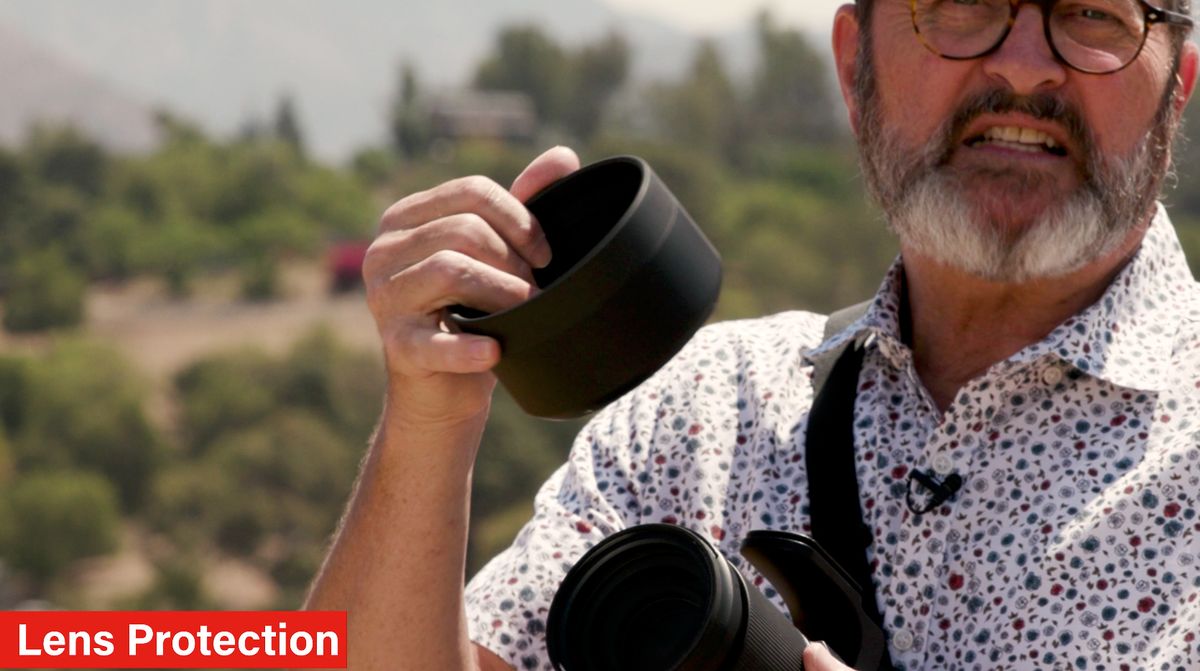
So the lens hood has a rubberized edge on it which is really an advantage. Because if you drop this or bump it a little bit it’s not going to bend that edge up, but it’s going to protect your lens.The lens itself, as with most all of Tamron’s telephoto lenses, has this little rubberized edge on it. So if you do bump it on something that’s going to handle a little bit of a bump. It’s not going to bend that edge of the lens or jam the mechanism. So that’s a real advantage. I like that about these lenses.
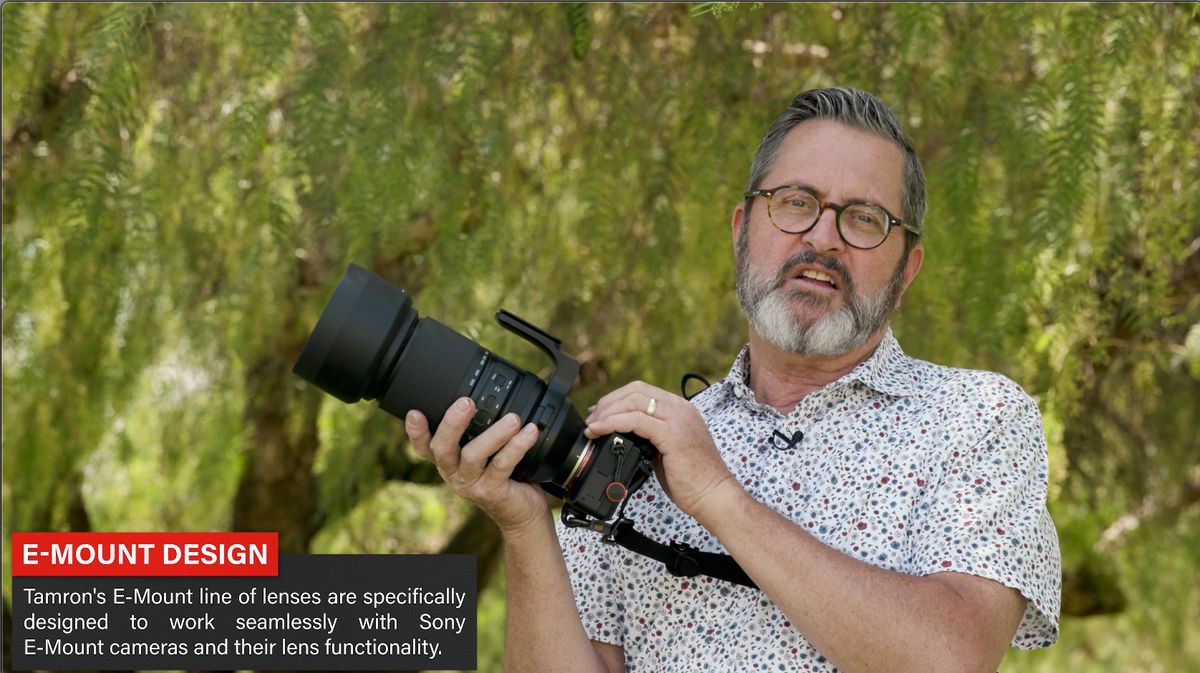
Alright, so let’s talk about my experience with the autofocus on this camera. That’s probably the one feature that most people are concerned about when they’re buying a lens like this. How’s it going to work with Sony? I’ve used it on the a7R III. I’ve used it on the a7R IV. This is the a7R IV right now. And on each of those cameras, I have been able to use the eye tracking. And interestingly enough, when I was photographing horses, I was able to use the animal eye tracking. It was focusing and was tracking the eye of the horse. When I shot the peacocks it was absolutely focusing. The eye tracking for animal was following the eyes of the peacock.
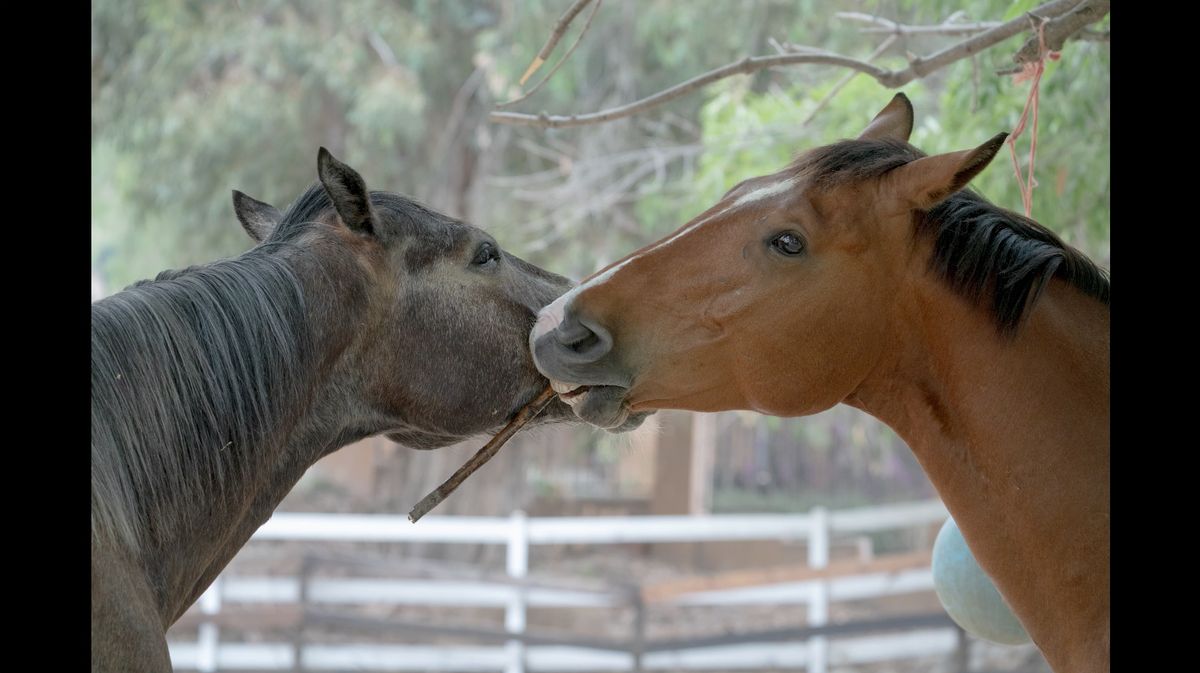
It’s got VHD, which is an extreme motor drive that’s going to drive your focus. Which really works and responds extremely well. I found it to be very responsive. I was able to follow in tracking mode like a bird, when it was flying by. I was able to stay on an object and it was focusing on the eye of a person. Also on a soccer player when I was photographing the soccer players. In each of those modes, I found that the autofocus was responsive and worked very seamlessly with the Sony cameras.
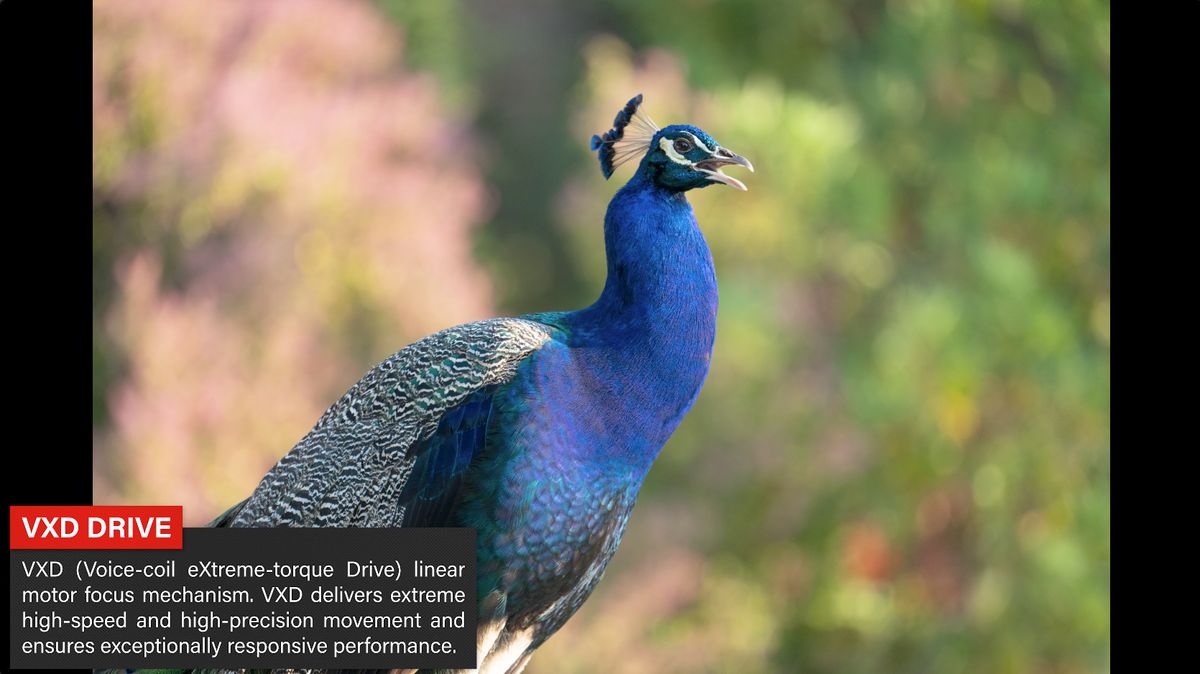
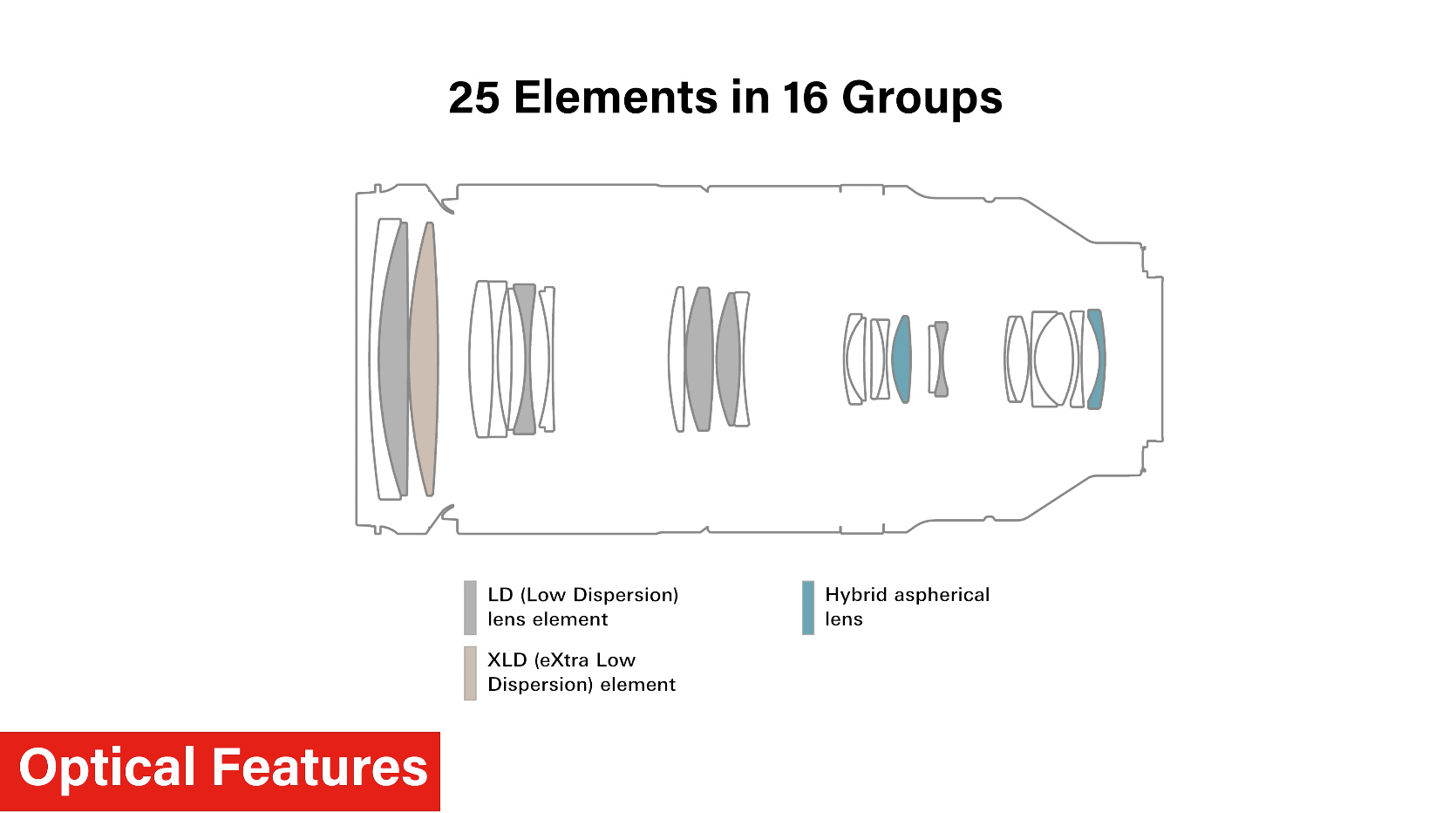
Let’s talk about the optics of this lens. It’s got 25 elements in 16 groups. Each one of those elements is made so that it will control that aberration and give a much cleaner, much sharper image. 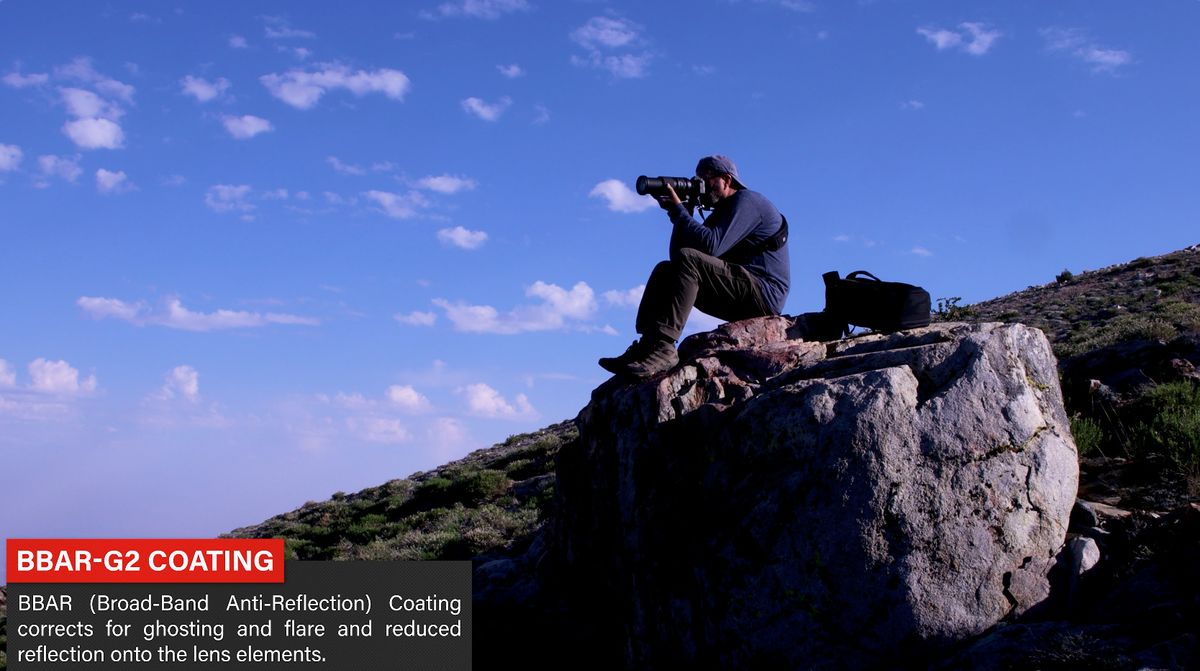 Each one of those elements has B-Bar G2 coating, which is going to help control flare and ghosting. It’s going to give you much nicer contrast and a lot better color accuracy.
Each one of those elements has B-Bar G2 coating, which is going to help control flare and ghosting. It’s going to give you much nicer contrast and a lot better color accuracy.
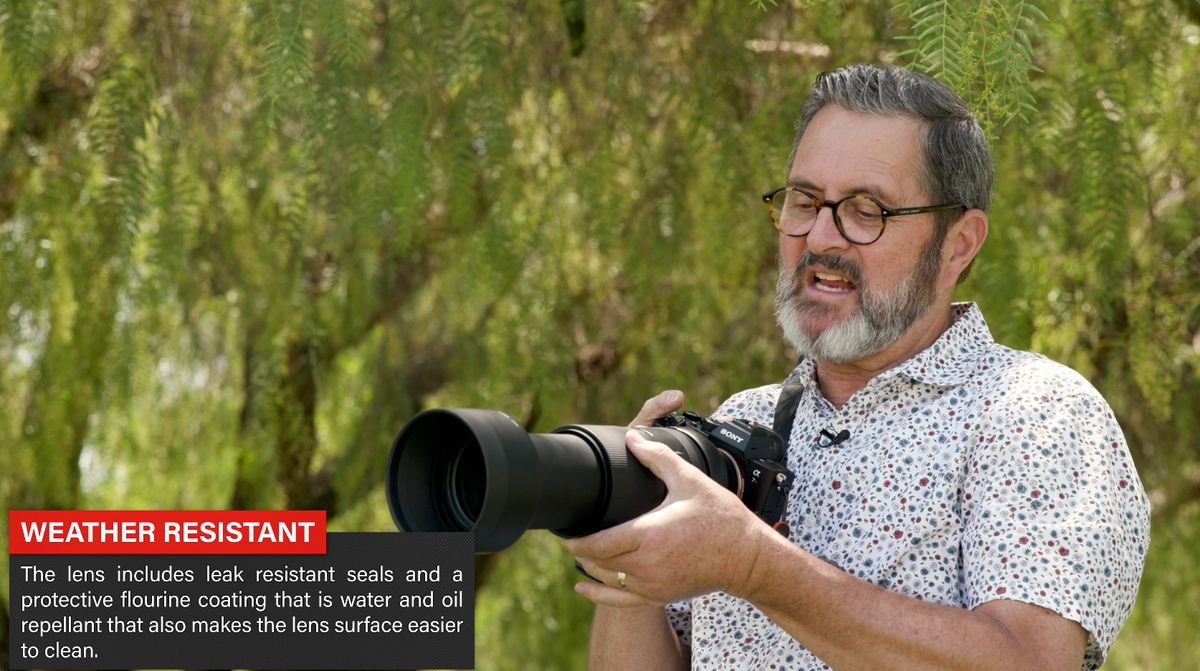 So this lens is designed and built with moisture resistant elements so that it’s going to be able to be used outside and take a little bit of weather, which is what it’s meant to do. It’s meant to be outside.
So this lens is designed and built with moisture resistant elements so that it’s going to be able to be used outside and take a little bit of weather, which is what it’s meant to do. It’s meant to be outside. 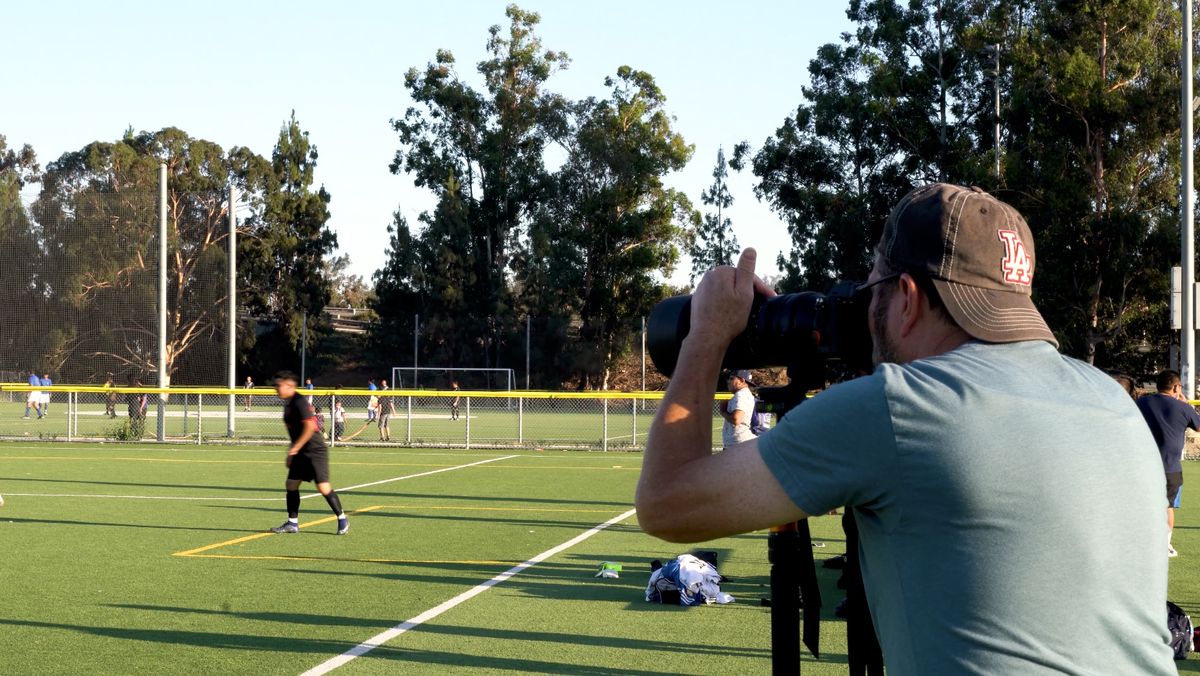 It is nice when you’re zooming with this, you get about, it’s not 100 degrees, about 70 degrees to roll from 150 to 500 millimeters. It makes it very quick to be able to roll this in and out. And you don’t have to strain your arm all the way around the lens to make that happen. So that works out really well.
It is nice when you’re zooming with this, you get about, it’s not 100 degrees, about 70 degrees to roll from 150 to 500 millimeters. It makes it very quick to be able to roll this in and out. And you don’t have to strain your arm all the way around the lens to make that happen. So that works out really well.
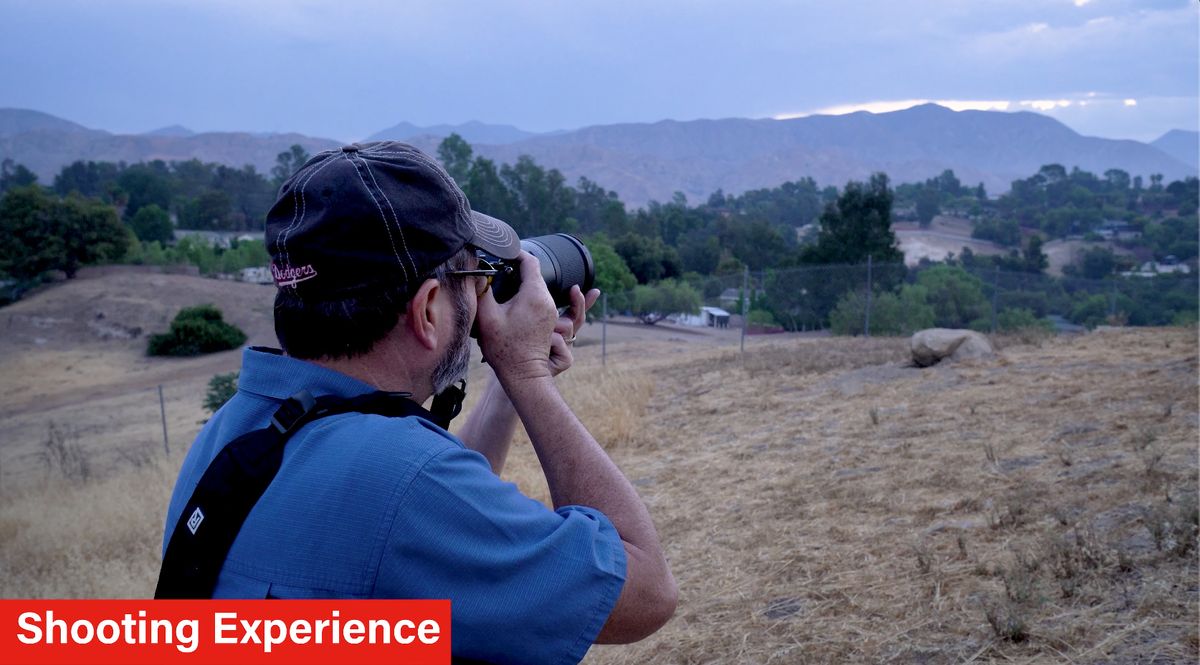 So at the beginning of the lesson, we talked about the VC stabilization and the different modes to use. But how did it work? You know, in hand holding with this, it’s a 500 millimeter lens, when you get this out to 500 millimeters and you’re trying to handhold it, my rule of thumb would be a 1/1000th of a second.
So at the beginning of the lesson, we talked about the VC stabilization and the different modes to use. But how did it work? You know, in hand holding with this, it’s a 500 millimeter lens, when you get this out to 500 millimeters and you’re trying to handhold it, my rule of thumb would be a 1/1000th of a second. 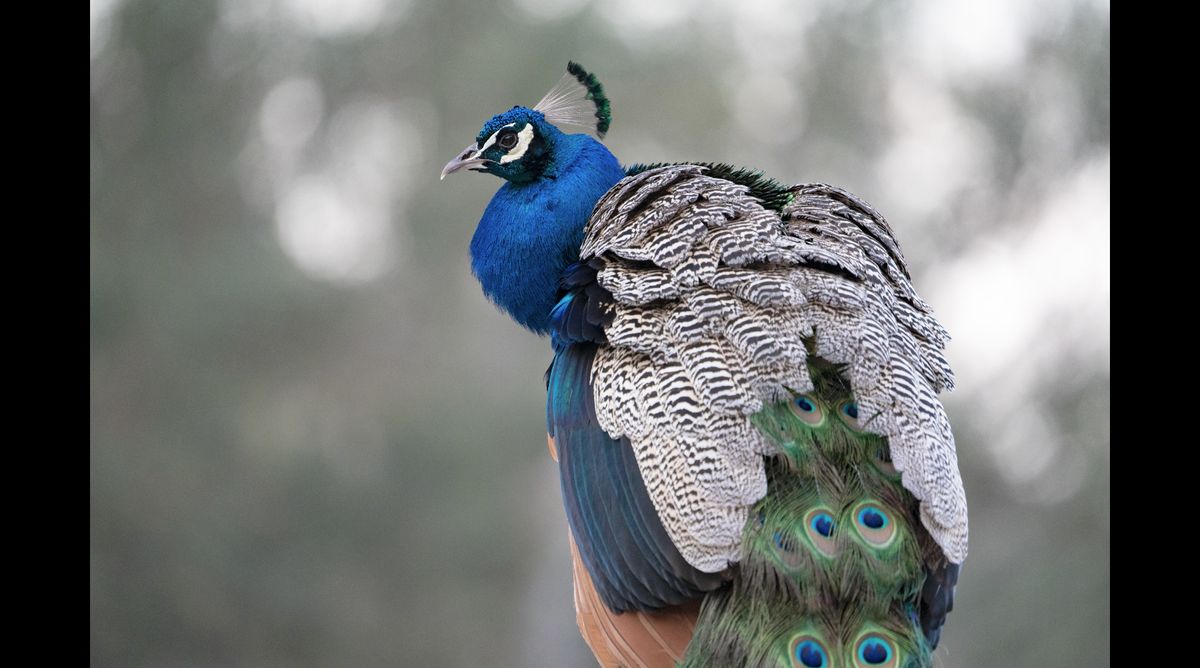 With that VC stabilization, I was able to go to 1/250th or 1/200th of a second. It was not hard to handhold at that. I didn’t shoot much of these images with a tripod. I did use a monopod when I was doing the sports stuff. But most everything else was handheld. So I found that that VC mode one and especially three were both very useful and gave me the ability to shoot this lens at a slower shutter speed than I normally would for a telephoto of this length and this size.
With that VC stabilization, I was able to go to 1/250th or 1/200th of a second. It was not hard to handhold at that. I didn’t shoot much of these images with a tripod. I did use a monopod when I was doing the sports stuff. But most everything else was handheld. So I found that that VC mode one and especially three were both very useful and gave me the ability to shoot this lens at a slower shutter speed than I normally would for a telephoto of this length and this size.
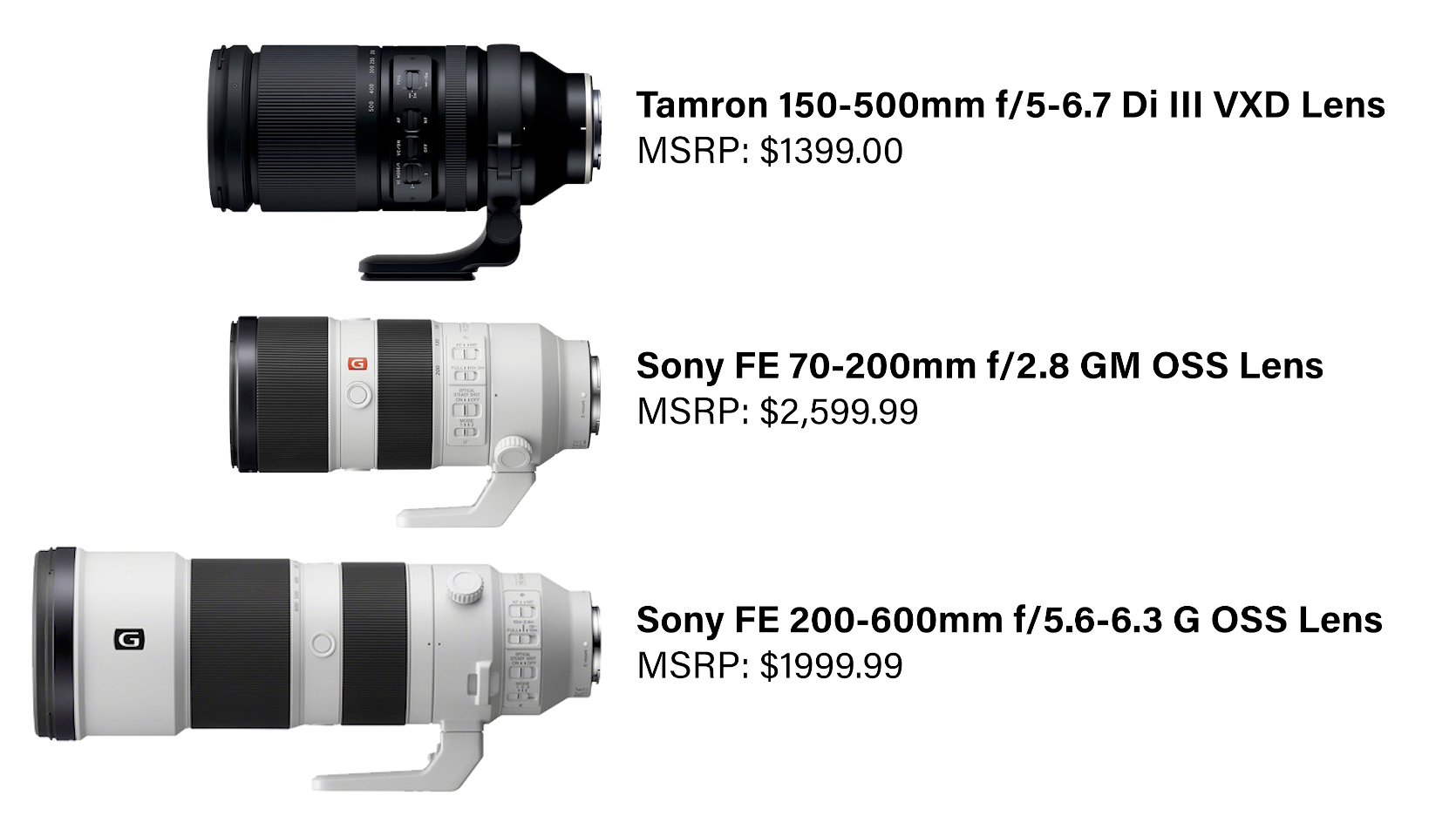
So for $1400 you can get into a lens that allows you to be able to do wildlife or some landscape or some sports type photography. I carried this lens on a hike that we did for four miles and this lens allowed me to get in tight on things and to do some vista types of things and to be able to shoot some animals. 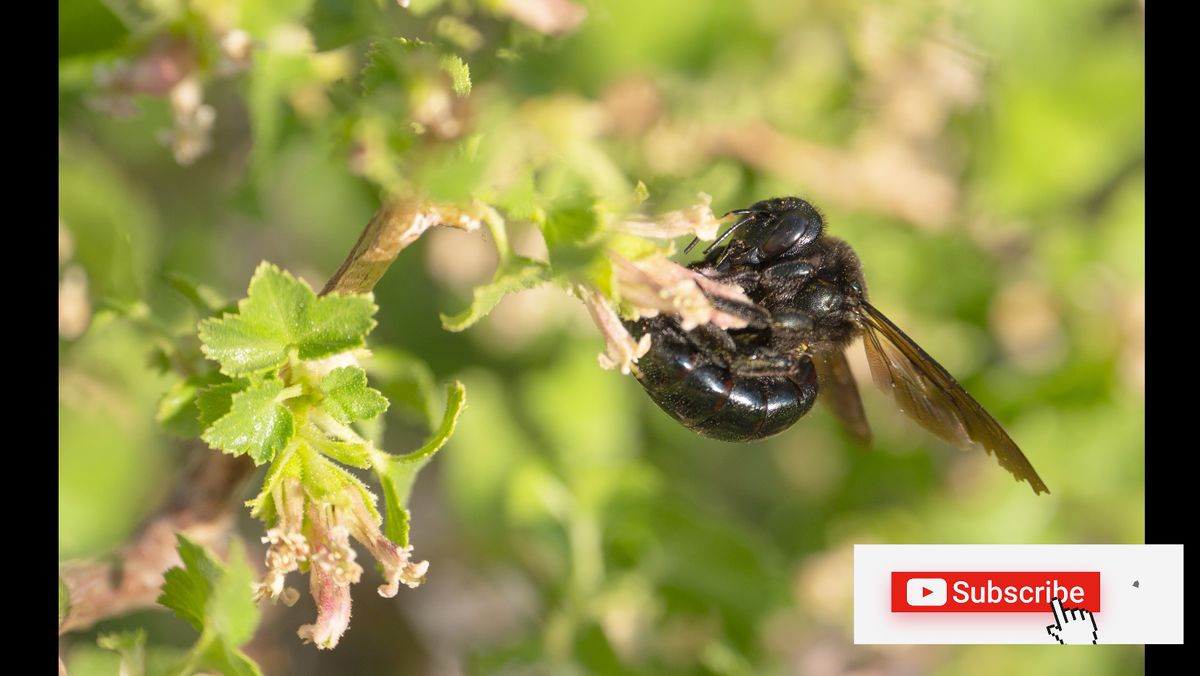 So it gave me an all-around great lens to be able to walk and carry in the backpack. I could add to that another lens that would give me a little wider end after this which would be great. But this just did a lot of things for me and it was small enough that I can carry it.
So it gave me an all-around great lens to be able to walk and carry in the backpack. I could add to that another lens that would give me a little wider end after this which would be great. But this just did a lot of things for me and it was small enough that I can carry it.
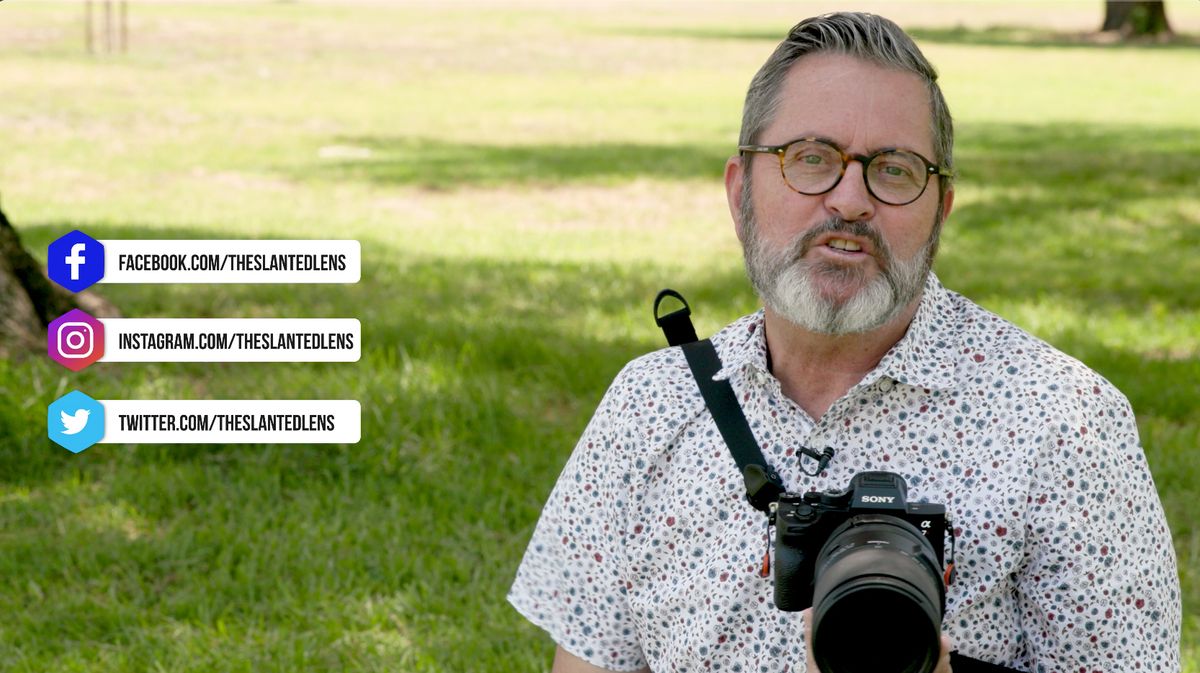
So I hope you enjoyed this as much as we loved making it, because we love to be out and to be shooting. And this lens was a lot of fun to work with. So check it out. See if it works for you and keep those cameras rollin’ and keep on clickin’.
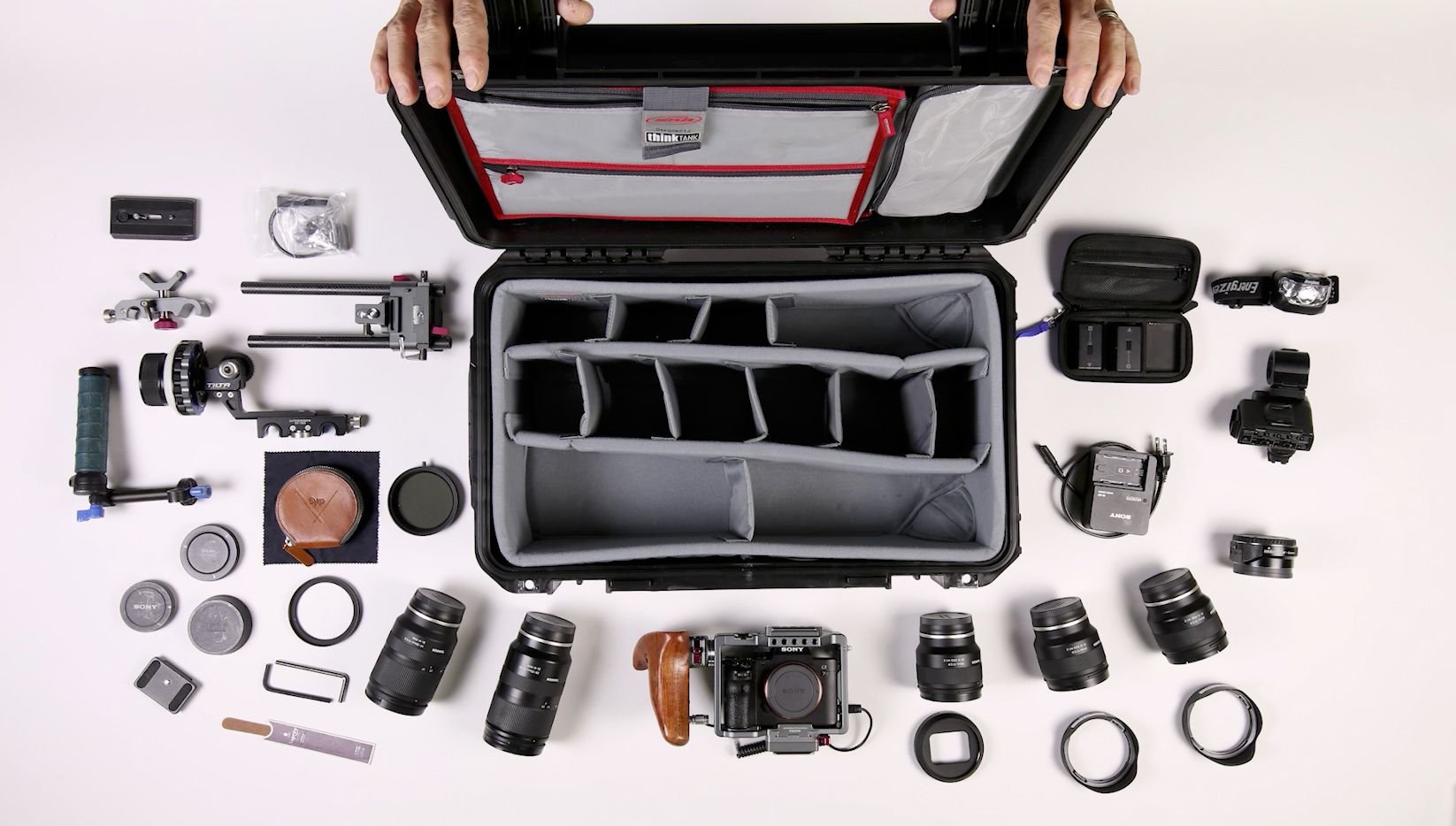
My SKB 2011 Case is perfect for all my Sony gear. Let’s pack it up. Sony a7R III and a Tilta cage. Tamron 28-75mm, Tamron 35mm, Tamron 17-28mm, Tamron 24mm, two Allen wrenches, ARCA Swiss plate and an emery board, Tamron 28 millimeter and shade, polarizer and step down ring, meta bones adapter, extra body and lens caps, Sony battery charger, Syrp variable ND filter and cleaning cloth, K2M Sony audio adapter, Tilta follow focus rig, batteries in a Shutter brands case, nuts and bolts, headlamp, Manfrotto plate…